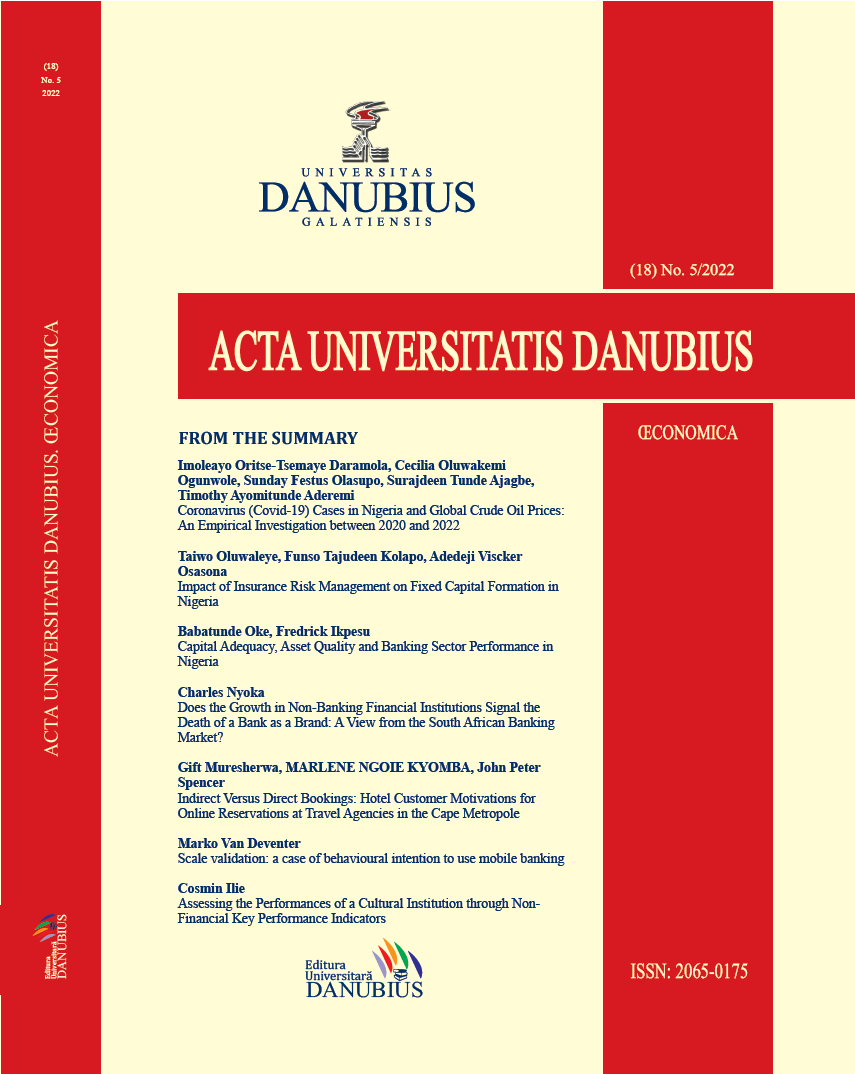Perception of Arable Crop Farmers on Child Labour in Sagamu Local Government Area, Ogun State, Nigeria
Keywords:
arableAbstract
The study focused on perception of child labour among arable crop farmers in Sagamu Local Government, Ogun State, Nigeria. Questionnaire was used to collect data from 132 arable crop farmers on socio-economic characteristics, reasons for engaging children in arable crop farming, factors influencing child labour and perception of child labour. Data was analysed using descriptive statistical tools and inferential tools such as Chi-square and Pearson Product Moment Correlation at p≤0.05 level of significance. Results indicate that arable crop farmers were within age category of 38-47 years and majority were married (88.6%), males (60.0%) who were well educated (94.7%) and were primarily traders (72.0%). Very few (39.4%) had access to credit facilities but operated on an average land-space of 5 acres, earning between ₦50,001-₦100,000 annually. There was unfavourable perception of child labour among majority (65.2%) of arable crop farmers in the study area while consequences of child labour were general child injuries (2.18). Test of hypotheses shows significant relationship between perception of child labour and secondary occupation (9.716), labour used (9.997), contact with extension workers (11.448), transmission of farming skills and knowledge (-0.250), training children to be independent (0.204), high cost of labour (.409), high cost of living (.531), low income (.363), lack of political will to empower farmers (0.258), and ignorance of policies of child labour (.408). In conclusion, arable crop farmers had unfavourable perception of child labour in the study area. The study therefore recommends more awareness on negative impact of child labour, organizing seminars, training and financial assistance to child guardians and parents to ameliorate severity of child labour consequences.
References
Adeoti, A. I., Coster A. S. and Gbolagun. A. O. (2013). “Child Farm Labour in Rural Households of South-West, Nigeria.” International Journal of African and Asian Studies, 1:47–56.
Adeoye SO, Agbonlahor MU , Ashaolu OF and UB Ugalahi (2017). Analysis of child labour dimensions and causes in rural farm households of ogun state, nigeria. Afr. J. Food Agric. Nutr. Dev.; 17(3): 12198 – 12214
Amao, J. O. (2013). Determinants of Child Labour among Households in Egbedore Local Government Area of Osun State, Nigeria. World Applied Sciences Journal,;25:607-614.
Barneston, B. (2009). Children Working alone in Alberta: How Child Labour and Working alone Regulations Interact. Just Labour: A Canadian Journal of Work and Society, 17: 34-48.
Bassey E.N., Baghedo M. and Otu C.A. (2012). Child Labour in Nigeria and its Economic Implications: A case Study of Calabar Municipality. Journal of Research on Humanities and Social Sciences, 2: 19-159.
Basu K. (2017). Child Labour: Causes, Consequences and Cure with Remarks on International Labour Standards. Journal of Economic Literature, 37: 1083-1119.
Diallo, Y., Étienne, A., Mehran, F. (2013). Tendances mondiales du travail des enfants de 2008 à 2012, Genève : BIT
International Labour Organization and Cornell University ILR School.2005. Childn Labour in Latin America. Ithaca, New York: Cornell University.
Muhammed, A.Y and M. N. Adeoye. (2006). “Socio-Economic Implications of Child Labour in Agricultural Development of Oro Community in Kwara State, as Expressed by Parents”. Paper Presented at 15th Annual Congress of the Nigeria Rural Sociological Association (NRSA).
Nkamleu, G.B and Kielland A.. (2006). “Modelling Farmers’ Decisions on Child Labour and Schooling in the Cocoa Sector:A Multinomial LogitAnalysisin Cote d’Ivoire.”Agricultural Economi, 35:319–33
Okafor, E.E. and Bode–Okunade A.S. (2003). Institutional Collapse and Child Labour: The Pervasive Problem of Street Hawking in Nigeria. In: Jike VT (Ed). The Scourge of Child Labour in Nigeria. A book of Reading Lagos: NIS Publication, 90-102.
Olivier E.M (2018): Determinants of child labour in Cameroon: The role of area of residence and gender In Revue d’économie du développement, 26:1, 5-52. Translated by Cadenza Academic Translations
Oloko SBA (2004): Child Labour in Nigeria: Continuities and Transformation. Inaugural Lecture Delivered at the University of Lagos, Lagos: University of Lagos Press.
Owusu Victor and Addo Gema Kwarteye (2008). An Empirical Analysis on the Determinants of Child Labour in Cocoa Production in Ghana. Paper presentation at PEGNet Conference 2008 Assessing Development Impact – Learning from Experience Accra (Ghana), 11 – 12
UNICEF Report (2005). United Nation’s Children and Education Fund report, United Nations.
Zdunek G, Dinkelaker D, Kalla B, Mathias G, Szrama R and Wenz K (2008) Child Labour and Children’s Economic Activities in Agriculture in Ghana. SLE Publication, Series S233.
Downloads
Published
How to Cite
Issue
Section
License
Copyright (c) 2022 Rafiu Adeniyi Mufutau, M.A. Oladoja, O.A. Adeokun, E. O. Osunmakinde, D.P. Nwaorgu

This work is licensed under a Creative Commons Attribution-NonCommercial 4.0 International License.
The author fully assumes the content originality and the holograph signature makes him responsible in case of trial.


